Telp : +86-18059296519
Whatsapp : +8618059296519
Surel : [email protected]

Ball valve tersedia dalam banyak varian. Salah satu jenis katup bola yang populer adalah katup bola 3 arah. Cara paling dasar pengoperasian katup bola tiga arah adalah dengan memutar bola di dalam badan katup. Rotasi ini menyelaraskan saluran bola katup dengan saluran keluar dan masuk.
Batang katup bola dapat diputar seperempat putaran untuk membuka atau menutup lubang. Pegangannya diposisikan tegak lurus atau sejajar dengan pipa. Posisi ini membantu pengguna memvisualisasikan status katup. Beberapa katup juga dirancang untuk mati secara otomatis. Hal ini memungkinkan mereka untuk mengontrol pengoperasian katup dari jarak jauh atau melalui pengontrol.
Katup bola tiga arah dapat mengalirkan cairan ke satu arah, mematikan aliran sepenuhnya, atau mencampur dua aliran berbeda. Katup bola tiga arah biasanya diproduksi dalam bentuk port T atau L. Kedua bentuk tersebut dapat dihubungkan ke satu saluran masuk atau saluran keluar, ke satu port, atau keduanya.
Ukuran :
1/2″~24″ DN15~DN600Standar :
ASME B16.34Bahan :
ASME B16.34, C95800, C63200, titanium alloy and other special materialsTekanan :
CL150~CL2500 PN6~PN420Tipe wajah :
FLG, SW, BW, NPT/G, CLAMPKeterangan
| Ukuran | Tekanan | Tipe Sambungan | Bahan | Standar |
| 1/2''-24'' DN15-DN600 | CL150-CL2500 PN6-PN420 | FLG,SW,BW,NPT/G,PENJEPIT | ASME B16.34,C95800,C63200, paduan titanium dan bahan khusus lainnya | ASME B16.34 |
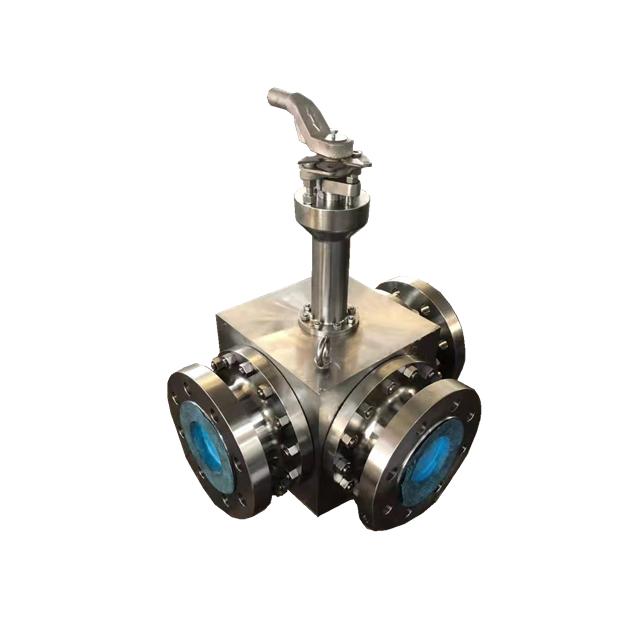
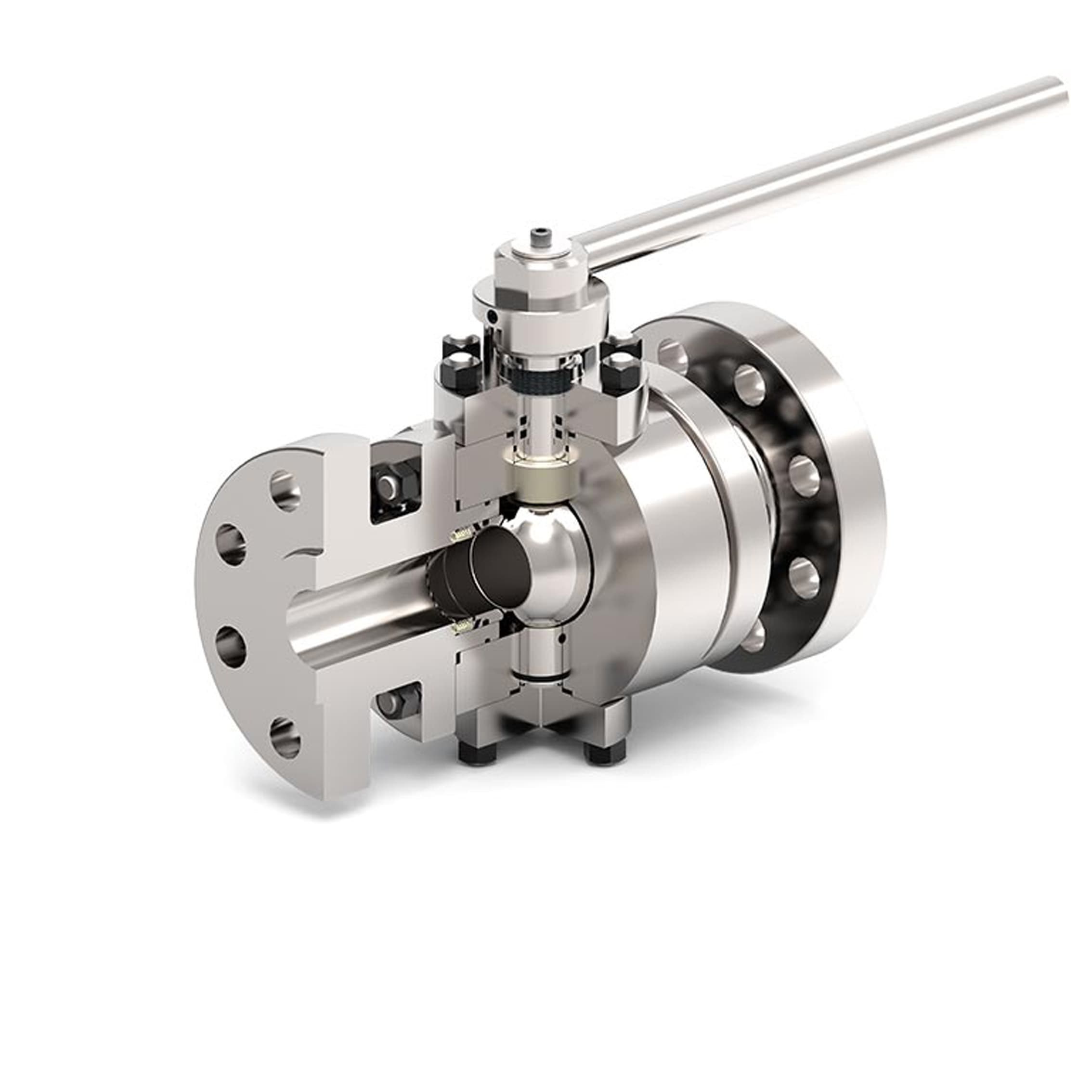
Katup bola adalah katup tipe putaran 90 derajat, anggota penutupnya adalah bola yang dapat berputar 90 derajat. Ketika katup diposisikan di mana lubang sejajar dengan arah yang sama dengan pipa, katup terbuka, dan memutar bola sebesar 90°, kemudian katup ditutup.
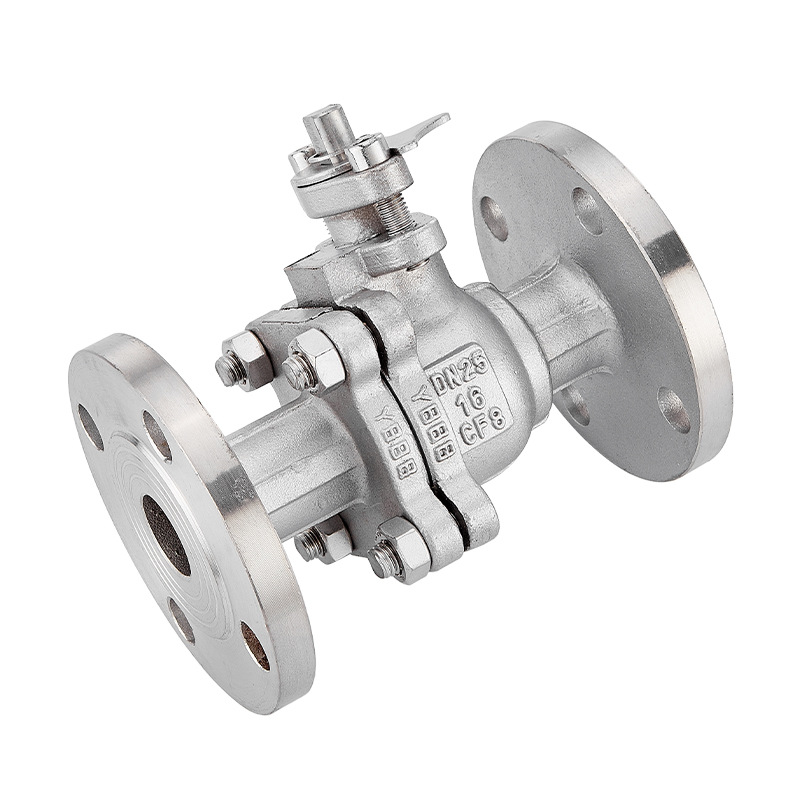
Katup Bola Port Standar, ANSI 150 lbs, Ujung Bergelang dengan pegangan pengunci.
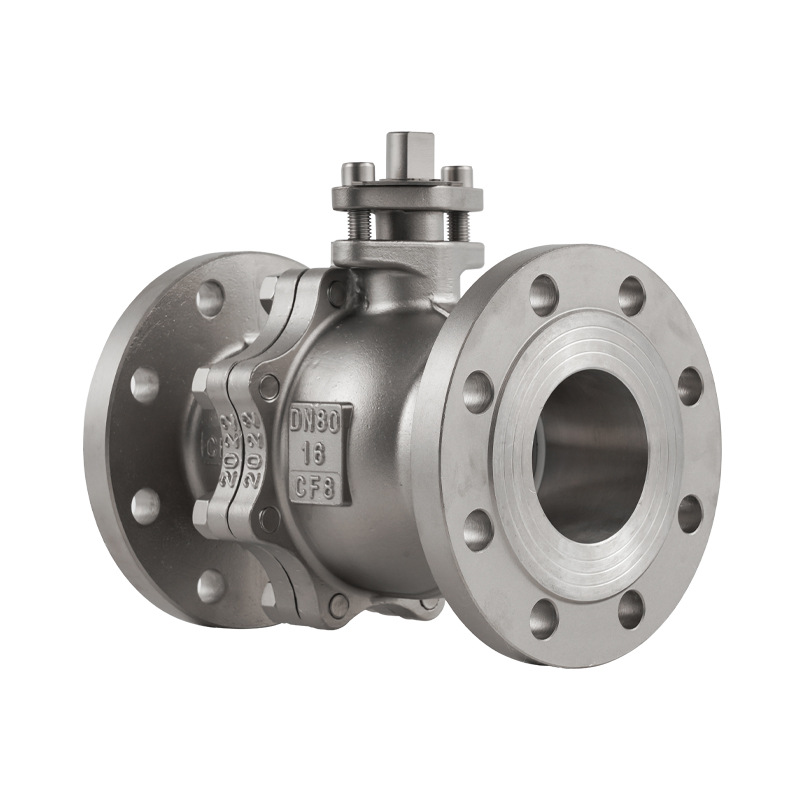
Katup Bola Port Standar, ANSI 150 lbs, Ujung Bergelang, Gagang Pengunci, dan Pemasangan Langsung.
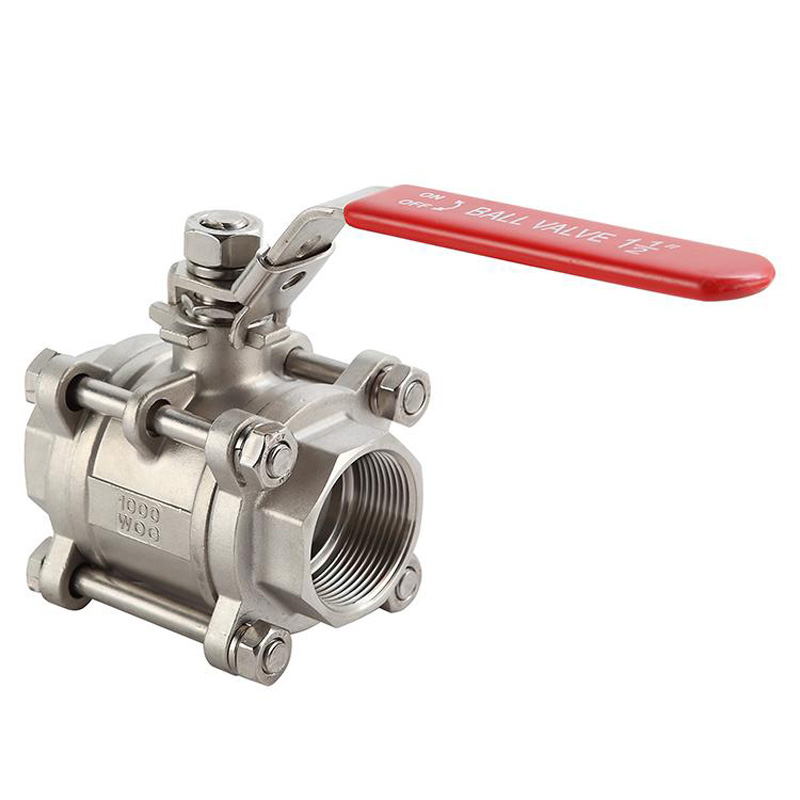
Katup bola adalah bentuk katup seperempat putaran yang menggunakan bola berongga, berlubang, dan berputar untuk mengontrol aliran yang melewatinya. Terbuka ketika lubang bola sejajar dengan aliran dan ditutup ketika diputar 90 derajat oleh pegangan katup. Pegangannya terletak rata sejajar dengan aliran saat terbuka, dan tegak lurus saat ditutup, sehingga memudahkan konfirmasi visual status katup.

Katup bola adalah bentuk katup seperempat putaran yang menggunakan bola berongga, berlubang, dan berputar untuk mengontrol aliran yang melewatinya. Terbuka ketika lubang bola sejajar dengan aliran dan ditutup ketika diputar 90 derajat oleh pegangan katup. Pegangannya terletak rata sejajar dengan aliran saat terbuka, dan tegak lurus saat ditutup, sehingga memudahkan konfirmasi visual status katup.Ruang lingkup aplikasi: industri kimia minyak bumi, tenaga listrik, metalurgi, kedokteran, real estate, teknik kota dan industri lainnya.
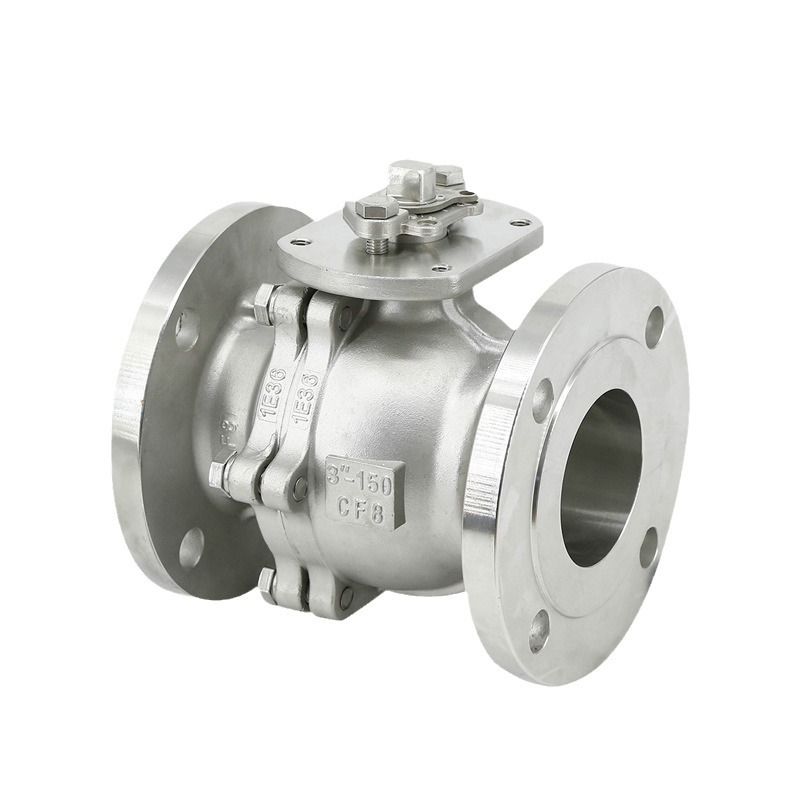
Katup bola adalah bentuk katup seperempat putaran yang menggunakan bola berongga, berlubang, dan berputar untuk mengontrol aliran yang melewatinya. Terbuka ketika lubang bola sejajar dengan aliran dan ditutup ketika diputar 90 derajat oleh pegangan katup. Pegangannya terletak rata sejajar dengan aliran saat terbuka, dan tegak lurus saat ditutup, sehingga memudahkan konfirmasi visual status katup.Ruang lingkup aplikasi: industri kimia minyak bumi, tenaga listrik, metalurgi, kedokteran, real estate, teknik kota dan industri lainnya.

Katup bola yang dipasang di Trunnion Baja Cor memungkinkan pengoperasian yang mudah dan lancar pada tekanan saluran tinggi. Bantalan yang disejajarkan dengan cermat membantu pengoperasian torsi rendah. Bola berada pada posisinya tetapi bebas berputar. Semua Katup Bola Trunnion Cor yang diproduksi oleh Vatac memiliki coran berkualitas tinggi yang andal dan desain tahan api yang disertifikasi menurut BS 6755, API607 & API 6FA. Memenuhi semua standar ASME yang berlaku.
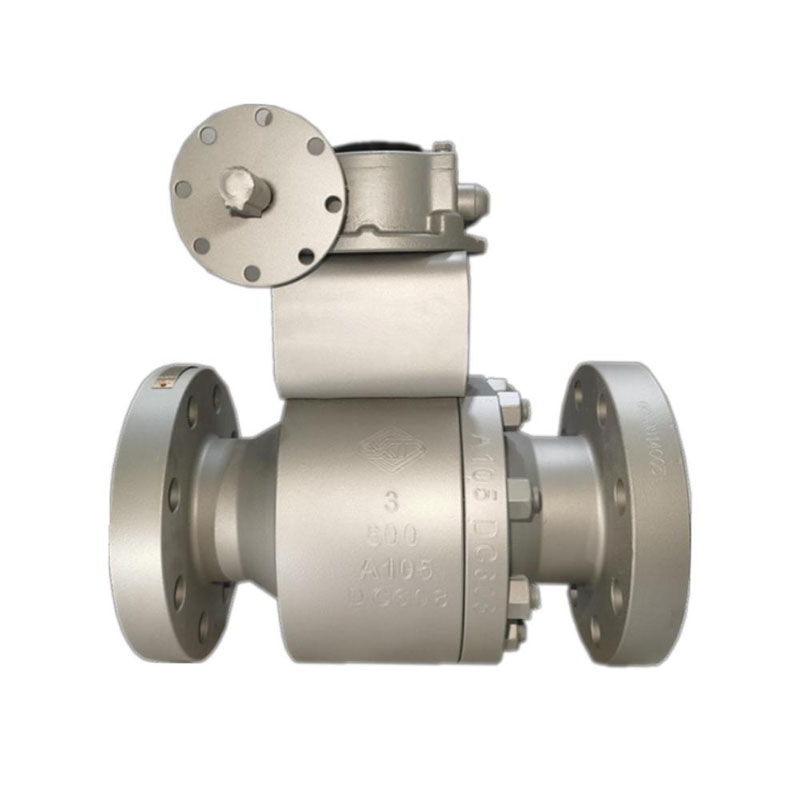
Katup Bola Mengambang adalah pilihan tepat untuk aplikasi servis hidup/mati dalam aplikasi tekanan yang lebih kecil atau lebih rendah karena tekanan benar-benar menyegel katup. Bonney Forge memproduksi Katup Bola Apung Tempa dalam beragam desain, bahan, ukuran, kelas tekanan, dan sambungan ujung yang dirancang sesuai dengan ASME B16.34 dan, jika berlaku, API 608, API 6D atau BS EN ISO 17292. katup telah disetujui uji tahan api dan mencakup fitur desain untuk memastikan kontinuitas listrik antara bola, batang, dan badan. Konfigurasi dudukan logam kriogenik dan suhu tinggi juga tersedia. Semua desain ditempa untuk meningkatkan sifat mekanik, retensi tekanan, dan kualitas.
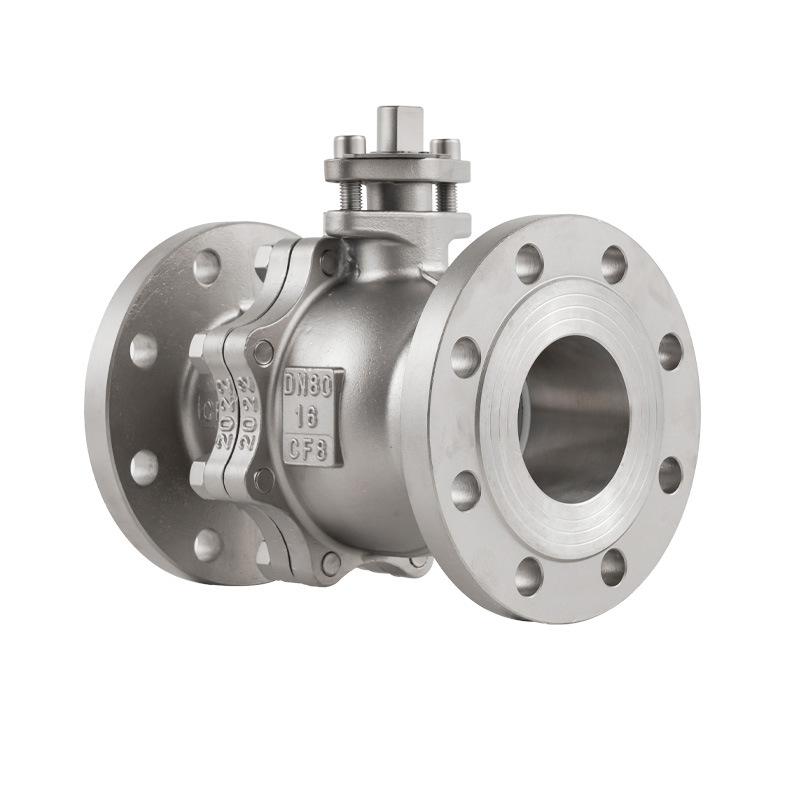
Katup bola stainless steel dapat ditutup rapat hanya dengan putaran 90 derajat dan torsi kecil. Rongga badan katup yang sepenuhnya sama memberikan saluran aliran lurus dan resistansi rendah untuk medium. Fitur utama katup bola adalah strukturnya yang kompak serta pengoperasian dan perawatan yang mudah. Ball valve stainless steel dapat digunakan untuk mengontrol aliran berbagai jenis fluida seperti udara, air, steam, berbagai media korosif, lumpur, minyak, logam cair, dan media radioaktif. Badan katup bola dapat diintegrasikan atau digabungkan. Katup jenis ini umumnya harus dipasang secara horizontal di dalam pipa. Klasifikasi katup bola baja tahan karat: katup bola pneumatik baja tahan karat, katup bola listrik baja tahan karat, katup bola manual baja tahan karat. Bahan katup bola stainless steel dibagi menjadi 304.316.321 katup bola stainless steel.
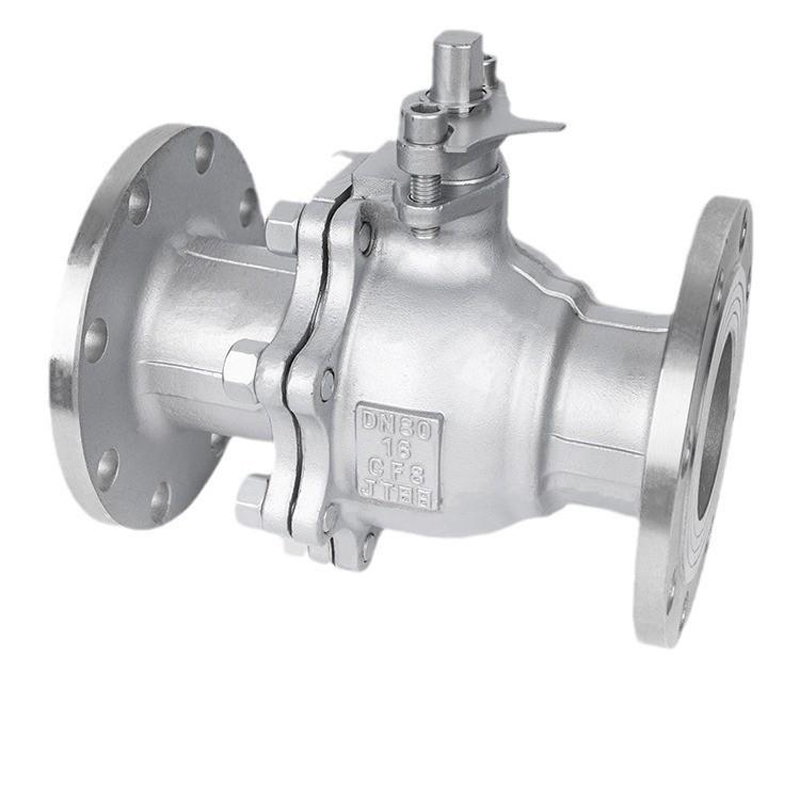
Katup bola adalah bentuk katup seperempat putaran yang menggunakan bola berongga, berlubang, dan berputar untuk mengontrol aliran yang melewatinya. Terbuka ketika lubang bola sejajar dengan aliran dan ditutup ketika diputar 90 derajat oleh pegangan katup. Pegangannya terletak rata sejajar dengan aliran saat terbuka, dan tegak lurus saat ditutup, sehingga memudahkan konfirmasi visual status katup.Ruang lingkup aplikasi: industri kimia minyak bumi, tenaga listrik, metalurgi, kedokteran, real estate, teknik kota dan industri lainnya.
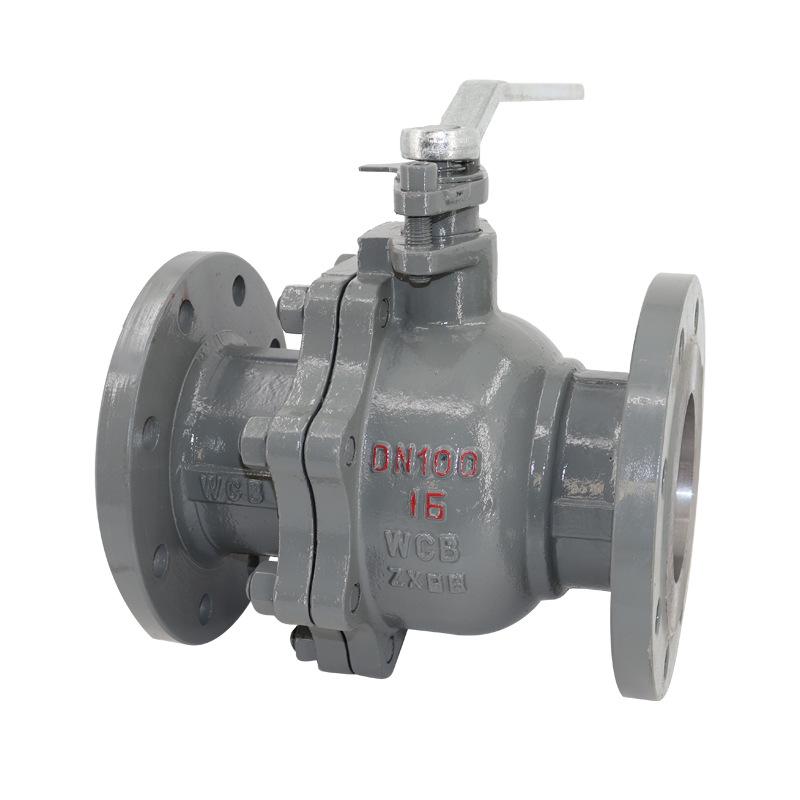
Katup bola adalah bentuk katup seperempat putaran yang menggunakan bola berongga, berlubang, dan berputar untuk mengontrol aliran yang melewatinya. Terbuka ketika lubang bola sejajar dengan aliran dan ditutup ketika diputar 90 derajat oleh pegangan katup. Pegangannya terletak rata sejajar dengan aliran saat terbuka, dan tegak lurus saat ditutup, sehingga memudahkan konfirmasi visual status katup.Ruang lingkup aplikasi: industri kimia minyak bumi, tenaga listrik, metalurgi, kedokteran, real estate, teknik kota dan industri lainnya.
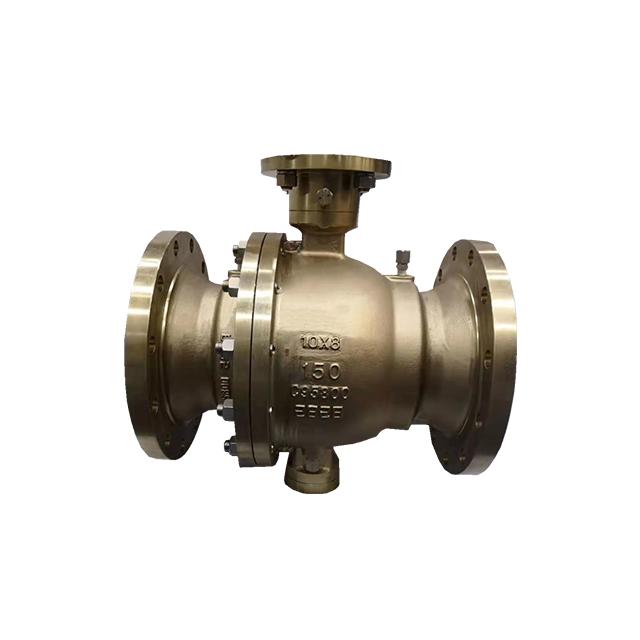
Katup bola adalah peralatan industri umum yang bekerja dengan membiarkan cairan mengalir melaluinya. Batang katup dihubungkan dengan mekanisme kontrol manual, seperti pegangan atau tuas. Batang memutar bola berputar yang melekat pada batang yang mengontrol cara membuka atau menutupnya. Katup juga biasanya dikendalikan oleh aktuator listrik atau pneumatik. Saat digunakan dalam proses pembuatan, katup bola dapat mengatur aliran fluida dengan mengatur pelampungnya.Cakram bola adalah batas tekanan terpenting ketiga di dalam katup bola. Cakramnya terbuat dari baja, dan dalam posisi tertutup, tekanan di dalam media bekerja melawannya. Katup bola juga memiliki dudukan yang dapat dipasang atau digantung. Tempat duduknya menyediakan tempat untuk meletakkan piringan bola. Seringkali, katup bola terbuat dari baja tempa dan memiliki dudukan yang terpasang padanya.Katup bola dapat digunakan di industri yang sanitasinya sangat penting. Katup bola yang tahan terhadap sanitasi tingkat tinggi sangat berharga dalam industri bioproses, makanan, dan farmasi. Mereka dapat menangani cairan dan padatan. Jika cairan mengandung bahan padat atau berserat, katup bola dapat menangani keduanya.
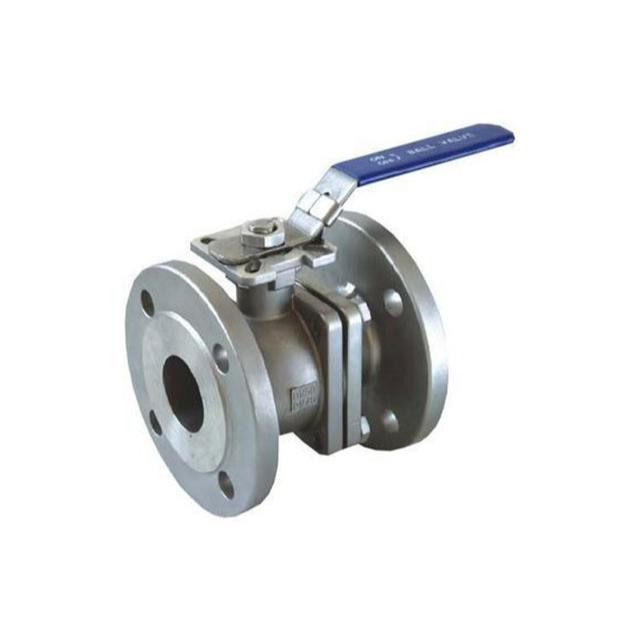
Katup bola adalah bentuk katup seperempat putaran yang menggunakan bola berongga, berlubang, dan berputar untuk mengontrol aliran yang melewatinya. Terbuka ketika lubang bola sejajar dengan aliran dan ditutup ketika diputar 90 derajat oleh pegangan katup. Pegangannya terletak rata sejajar dengan aliran saat terbuka, dan tegak lurus saat ditutup, sehingga memudahkan konfirmasi visual status katupRuang lingkup aplikasi: industri kimia minyak bumi, tenaga listrik, metalurgi, kedokteran, real estate, teknik kota dan industri lainnya.
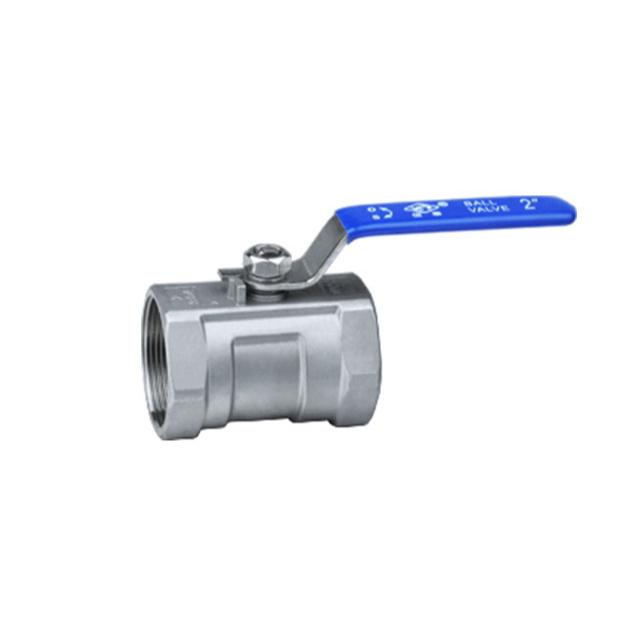
Katup bola adalah bentuk katup seperempat putaran yang menggunakan bola berongga, berlubang, dan berputar untuk mengontrol aliran yang melewatinya. Terbuka ketika lubang bola sejajar dengan aliran dan ditutup ketika diputar 90 derajat oleh pegangan katup. Pegangannya terletak rata sejajar dengan aliran saat terbuka, dan tegak lurus saat ditutup, sehingga memudahkan konfirmasi visual status katup.Ruang lingkup aplikasi: industri kimia minyak bumi, tenaga listrik, metalurgi, kedokteran, real estate, teknik kota dan industri lainnya.
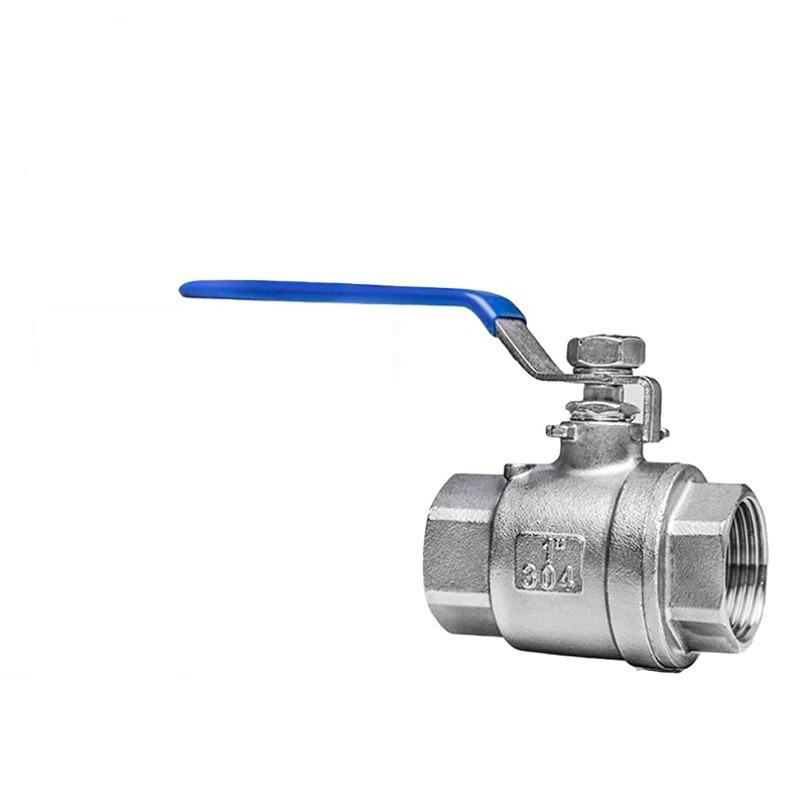
Katup bola adalah bentuk katup seperempat putaran yang menggunakan bola berongga, berlubang, dan berputar untuk mengontrol aliran yang melewatinya. Terbuka ketika lubang bola sejajar dengan aliran dan ditutup ketika diputar 90 derajat oleh pegangan katup. Pegangannya terletak rata sejajar dengan aliran saat terbuka, dan tegak lurus saat ditutup, sehingga memudahkan konfirmasi visual status katupRuang lingkup aplikasi: industri kimia minyak bumi, tenaga listrik, metalurgi, kedokteran, real estate, teknik kota dan industri lainnya.
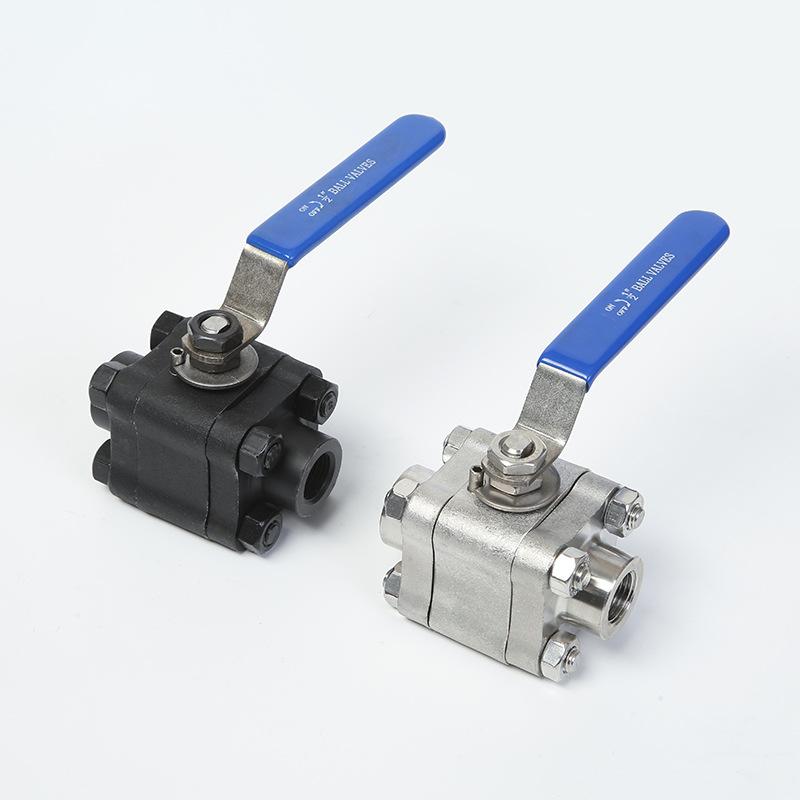
Katup bola adalah bentuk katup seperempat putaran yang menggunakan bola berongga, berlubang, dan berputar untuk mengontrol aliran yang melewatinya. Terbuka ketika lubang bola sejajar dengan aliran dan ditutup ketika diputar 90 derajat oleh pegangan katup. Pegangannya terletak rata sejajar dengan aliran saat terbuka, dan tegak lurus saat ditutup, sehingga memudahkan konfirmasi visual status katup.

Katup bola flensa mengacu pada katup bola yang terbuat dari bahan flensa. Katup bola adalah jenis katup baru yang banyak digunakan. Katup bola terutama digunakan untuk memotong, mendistribusikan dan mengubah arah aliran media di dalam pipa. Hanya perlu dioperasikan dengan putaran 90 derajat dan torsi putaran kecil agar dapat menutup rapat.
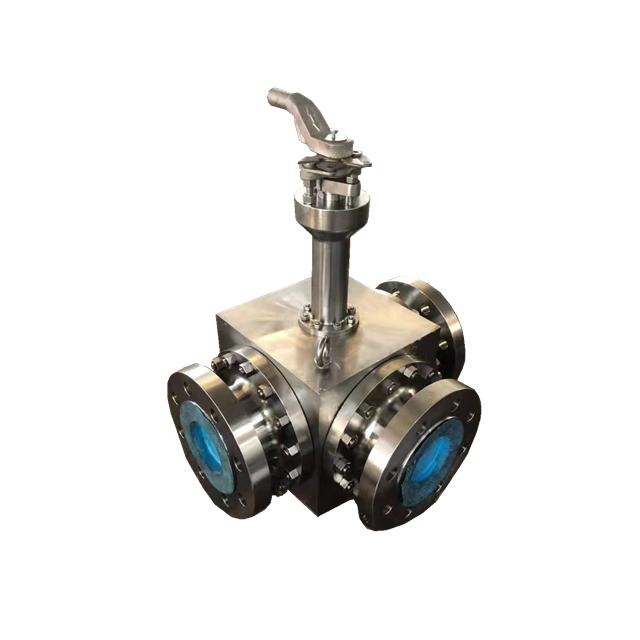
Ball valve tersedia dalam banyak varian. Salah satu jenis katup bola yang populer adalah katup bola 3 arah. Cara paling dasar pengoperasian katup bola tiga arah adalah dengan memutar bola di dalam badan katup. Rotasi ini menyelaraskan saluran bola katup dengan saluran keluar dan masuk.Batang katup bola dapat diputar seperempat putaran untuk membuka atau menutup lubang. Pegangannya diposisikan tegak lurus atau sejajar dengan pipa. Posisi ini membantu pengguna memvisualisasikan status katup. Beberapa katup juga dirancang untuk mati secara otomatis. Hal ini memungkinkan mereka untuk mengontrol pengoperasian katup dari jarak jauh atau melalui pengontrol.Katup bola tiga arah dapat mengalirkan cairan ke satu arah, mematikan aliran sepenuhnya, atau mencampur dua aliran berbeda. Katup bola tiga arah biasanya diproduksi dalam bentuk port T atau L. Kedua bentuk tersebut dapat dihubungkan ke satu saluran masuk atau saluran keluar, ke satu port, atau keduanya.
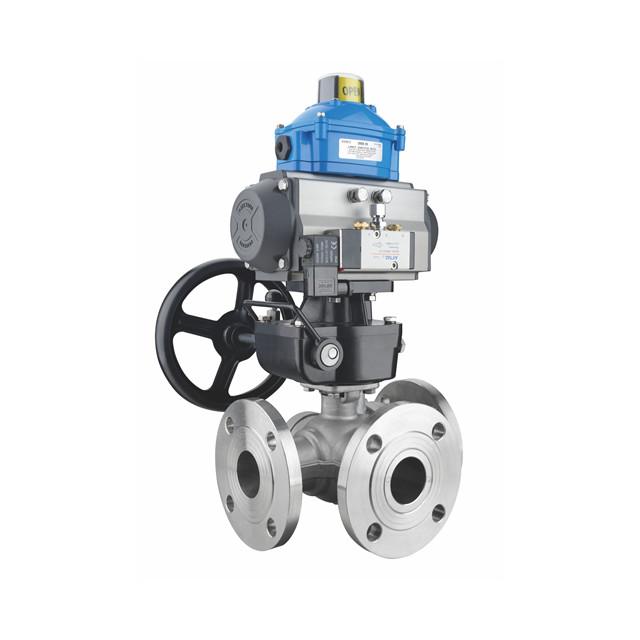
Port L memungkinkan satu aliran melewati satu port dan dua lainnya melalui port lainnya. Tergantung pada kebutuhan aliran aplikasi, Anda dapat memilih antara katup bola port L dan katup bola port T.Katup bola port L pada umumnya memiliki tiga port dan bentuk L. Katup ini beroperasi sebagai pengalih tanpa posisi cut-off. Ketika port tengah diputar 90 atau 180 derajat tambahan, katup dapat dimatikan. Katup ini sering disebut sebagai katup tiga posisi.
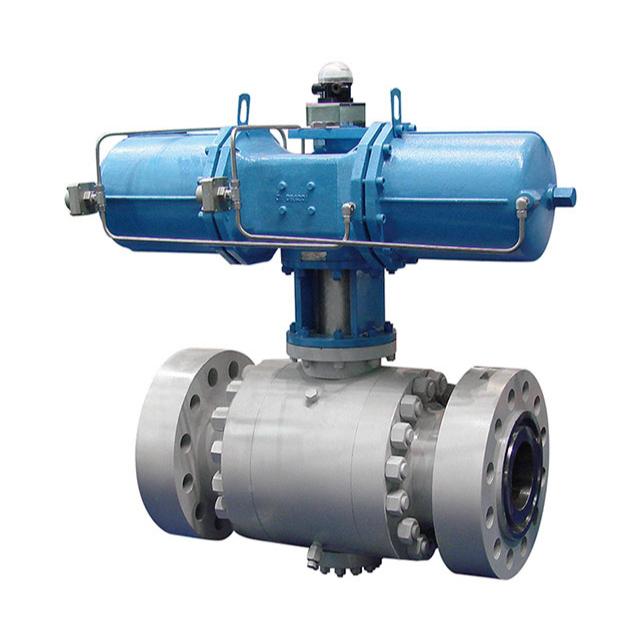
Katup bola adalah bentuk katup seperempat putaran yang menggunakan bola berongga, berlubang, dan berputar untuk mengontrol aliran yang melewatinya. Terbuka ketika lubang bola sejajar dengan aliran dan ditutup ketika diputar 90 derajat oleh pegangan katup. Pegangannya terletak rata sejajar dengan aliran saat terbuka, dan tegak lurus saat ditutup, sehingga memudahkan konfirmasi visual status katupRuang lingkup aplikasi: industri kimia minyak bumi, tenaga listrik, metalurgi, kedokteran, real estate, teknik kota dan industri lainnya.



No.1633, Binhai Road, Wenzhou Economic Development Zone, Wenzhou, China


 Jaringan IPv6 didukung
Jaringan IPv6 didukung
